A Better Future for the Planet Earth
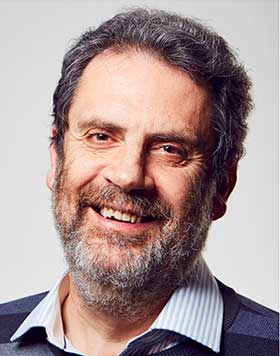
Dr. Simon N. Stuart (UK)
Conservation Biologist
Born: 14 July 1956, U.K.
Chief Scientific Advisor
Synchronicity Earth
(UK based conservation charity)
Executive Director
A Rocha International
(Christian organization engaging communities
in nature conservation)
Former Chair of the
Species Survival Commission (SSC) for IUCN
Early Childhood
I was born in 1956 in a little village in the West Midlands of the United Kingdom. My father was an engineer, and my mother always had an interest in dairy farming. I was brought up in a home with a big garden where I could observe flowers and birds. When I was about six, we moved down to Dorset in the south of England, where we had the countryside on our doorstep, so we were fortunate to grow up surrounded by wildlife. It was also a warmer place, so there were many different types of animals and plants that could not be found elsewhere in the country. I played freely in nature and developed interests in various living creatures such as rare birds, reptiles, and amphibians.

Dr. Stuart (far right) with his mother and siblings
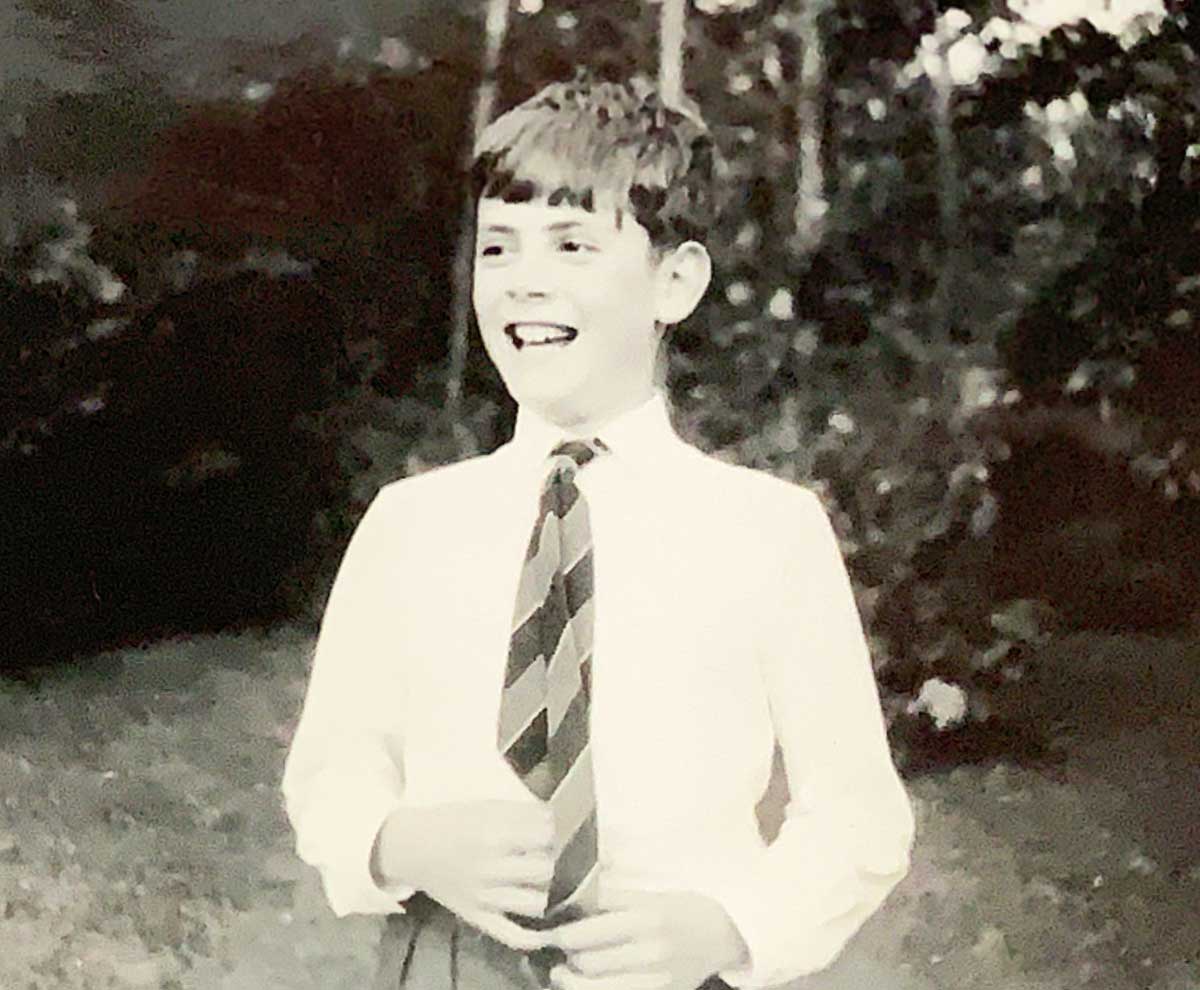
Dr. Stuart at the age of 10
I am the oldest of four children with two sisters, and a brother. They weren't as interested in wildlife as I was, but I found some other friends who were, and I spent a lot of time with them down on the river or exploring faraway places by bicycle. By the time we were 10 years old, we knew various animal and plant habitats very well. My parents nurtured my passion for living things and willingly left me to my own devices. All that was asked of me was to be back home in time for dinner and inform my parents if a friend was joining me. I really had a good childhood.
An Encounter of a Lifetime / Entering University
When I entered secondary school at age 13, I met an amazing biology teacher named Tim Hooker. He is still alive and was a great expert on all forms of wildlife and had an immense influence on my future path.
I really didn't like sport very much and was never any good at it, so he took me under his wing. When other students were doing sport, he taught me natural history. Outside our regular biology classes, he also taught me how to count birds, how to identify them by their songs, how to catch poisonous snakes, reptiles, and amphibians, how to catch fish and identify them, how to identify fungi and distinguish which ones were edible and how to cook them. He taught me so much over that 5-year period. He also introduced me to his friend, Jane Goodall the chimpanzee expert who was working in Tanzania. She was looking for someone to teach her son, so I spent part of my gap year between high school and university in Tanzania living at her research station and teaching her son. After a few hours of teaching him basic primary reading and writing each day, I spent the rest of my time observing East African birds, searching around for chimpanzees and baboons, swimming in Lake Tanganyika, and all that. I immediately fell in love with Africa. I was able to see things with my own eyes that I had only seen on television programs or in books beforehand. I saw a lot of wildlife and experienced Tanzanian cultural traditions. As you can imagine, that sort of thing was completely new to an 18-year-old from the UK. By that time, I knew I wanted to study natural history and do wildlife research in the future.
I had gained an impressive knowledge of the natural world thanks to my parents and Tim Hooker. I followed in Tim Hooker’s footsteps and went to Cambridge University to study biology. In those days, the concept of wildlife conservation wasn't as well developed as it is today, but in my final year I took a course called "applied wildlife biology" (similar to conservation biology today) which opened up the possibility for a career in conservation.
University Days, Which Defined My Life’s Path
Several important things happened while I was studying at Cambridge University that defined the direction of my life. The first thing was that I became Christian, and the second thing was that in my first term I met Ann who was also studying biology at the University. Ten years later she became my wife.

University days

Dr. Stuart (second from right) and his wife Ann (far left)
On the academic side, I came under the strong influence of two academics. The first was C. W. "Con" Benson, who was a curator of Ornithology at the University Museum of Zoology, Cambridge, and a top expert in African birds. The other one was S. K. "Keith" Eltringham, who studied large mammal ecology and wildlife management in East Africa. Through them, I gained the opportunity to spend three years doing PhD fieldwork on the biogeography and conservation biology of the Eastern Arc mountains, Tanzania. Keith became my supervisor and Con was a key scientific advisor. We worked together for only a few years, but it was such a privilege to be guided by excellent academics like them.
Fieldwork in Tanzania
Before I entered university, I stayed on the shores of Lake Tanganyika in western Tanzania (Jane Goodall’s research station). However, my PhD research on birds was conducted far away in the northeast of Tanzania, mostly in the Usambara Mountains because of its rare and threatened species. I collected a lot of data on the large number of bird species there. I gathered data on the types of habitats, vegetation type, tree height, forest density, and elevation. Birds had to be counted through birdsong recognition because they were often out of sight. I also looked at the effects that forest clearance had on the birds because there had been a lot of deforestation at that time. While I was there, I discovered some things that I didn't expect to discover. I found out that in cooler seasons, many birds would leave the higher parts of the mountains and they would go to forests in the lower foothills. As the weather started to get warmer and wetter, they would move back to higher altitudes and start breeding. Even though the mountains are very close to the equator and the seasonal temperature change was not dramatic, birds seasonally migrated between altitudes. What that meant was, because all altitudes of forest are necessary for species survival, it would be wrong to only conserve the forest at the top and assume everything would be all right even if we lost the forest below. So that was a very important finding for forest conservation in this area.
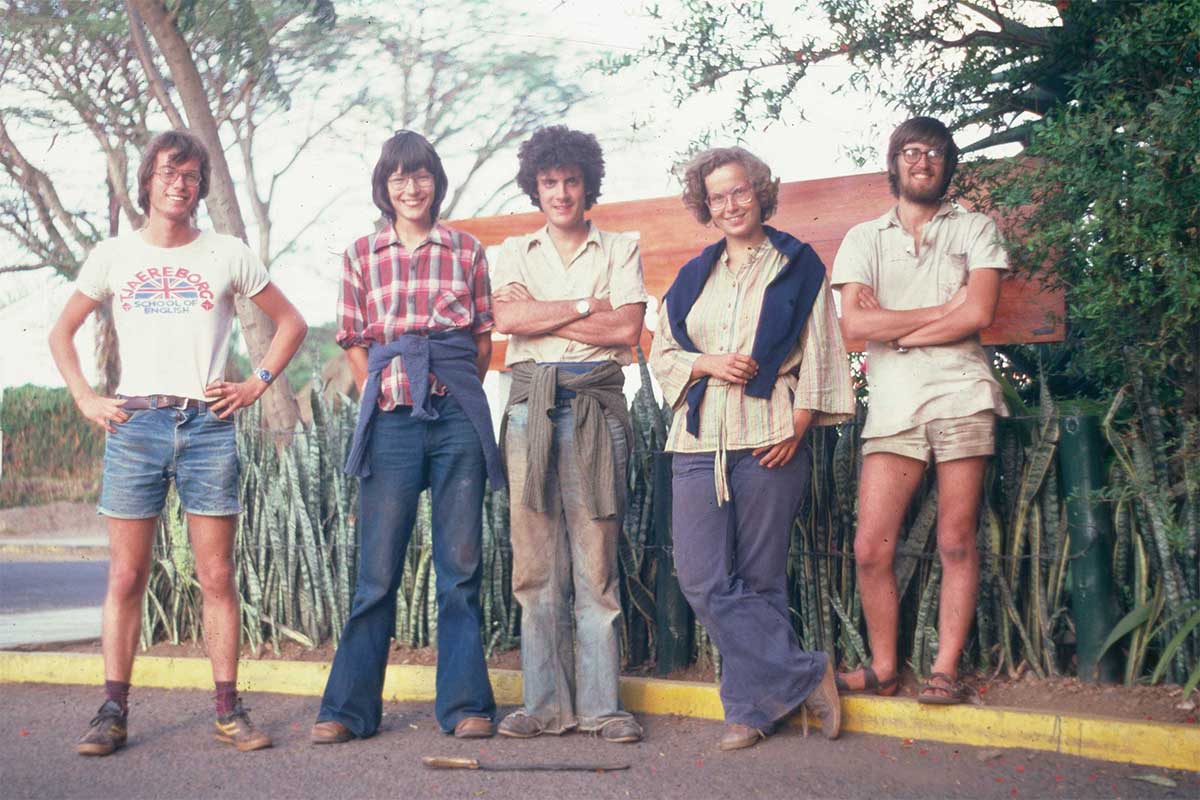
In Tanzania, 1978
There were three major challenges in my fieldwork. The biggest challenge was the weather, because I couldn’t really do too much work on birds when it was raining. The second was vehicle maintenance. The roads were extremely bad and very poorly maintained, so vehicles broke down frequently because of the wear and tear on them. I needed a car to get supplies and food, so that was a major issue. Generally speaking, people think that wild animal attacks are a real danger and concern in Africa.
Leopards do roam about, but the bush pigs are more dangerous. There are also poisonous snakes and "siafu" — the safari ants. These safari ants go on raiding parties and eat whatever they can find. If they find a bird caught in a net, that bird will be dead in a very short space of time. Thirdly and probably most importantly, when going to a new place in a remote area, I could never go on your own. Many villages were wary of foreigners, so I had to go with someone local who could vouch for me, and a translator to answer their questions. I asked my counterpart to explain that I was a good man who was only there to study birds. After that, I would meet the chief, take part in a ritual, and then finally start my work in that area. Living for a long period of time in those places enabled me to learn a lot about their culture and to respect these remarkable people, often living in very difficult conditions.
My fieldwork in Tanzania was a formative experience which made me realize two important things. First, by really getting involved in conservation-related research I realized that I was very interested in the conservation of threatened species. I also realized that conservation is not purely a science. You need the science to know what to conserve, and assess its ecological requirements, but you also need the engagement of people to get anything done. So meeting, communicating, then building a close relationship with local communities, academics and some influential people is also an important part of conservation work.
Finishing PhD and joining IUCN
In 1983 before I finished my PhD at Cambridge University, I was approached by the International Council for Bird Preservation (ICBP), which is now called Birdlife International, and asked if I would help in the compilation of the African Bird Red Data Book, an earlier form of the IUCN Red List. I initially did short term consultancy work for ICBP before working for them full-time. My role was mainly to gather all the information on each species, so so that we could assign species to the threat categories of the old Red Data Book.

In Tanzania, 1981
In 1985, I applied for a vacancy at IUCN (*1993 Blue Planet Prize winner) and was fortunately chosen from among many other applicants. I went to IUCN headquarters near Geneva and joined Ann who was already working as a biology teacher in Switzerland. We got married the following year. I was mainly involved with IUCN Species Survival Commission (SSC) work, and as a result I started to work more closely with the IUCN Red List.
Rebirth of the Red List
There had been complaints for a while that the Red List was subjective because it placed species into categories such as extinct, endangered, or vulnerable without clear selection criteria. People with a vested interest were keen to get their species into particular categories and in some instances they tried to use their positions of power to influence the assigning of species into a particular category. Sometimes people felt that having a species in a more threatened category would make it easier to raise funds for their conservation. Other people wanted species in less threatened categories to make it easier to trade commercially in them. As a result, scientific objectivity, credibility, transparency and fairness were being undermined. In 1987, the steering committee of the Species Survival Commission decided that the Red List needed to be reformed, and they invited Dr Georgina Mace, a young researcher from the Zoological Society of London, to lead it. She was a great expert on the theory of extinction risk and had a deep understanding of conservation biology behind it.
So under her lead, a team was formed and I was assigned as the IUCN staff member to work with her. What we did first was to come up with different ways of developing criteria to deal with different factors that drive species towards extinction. We needed a very wide variety of expertise, including botanists and zoologists, as well as experts on marine species, freshwater species, fungi, insects, and so on. Georgina came up with a system that was robust in terms of its basis in the theories of extinction risk; and she designed a prototype of criteria and categories to rank species according to their extinction risk. My role was to build a process for getting specialists from various fields involved to test these prototype criteria to see if they could be applied to all different species, and then discuss the results with them to develop the criteria further, before repeating the same procedure again. Part of the challenge was finding specialists who were willing to be involved in this onerous process. So I needed to find people who were both experts and yet had a very positive attitude, who believed they could get things done with a mindset of "Yes, we can." Over time, we gradually started bringing more experts in on it. The more people came on board, the greater the social pressure to participate in reviewing and developing the criteria. As a result, we were able engage hundreds of specialists in the process, and in 1994 the first quantitative IUCN Red List Categories and Criteria were formally adopted.

IUCN Red List published in 1996
The new Red List basically had five threatened and extinct categories: (1) Extinct; (2) Extinct in the Wild; (3) Critically Endangered; (4) Endangered; and (5) Vulnerable. For categories (3)-(5) there were five quantitative criteria under: A to E. Any wild species, be it a whale or moss, if it meets any of these detailed criteria, will be considered to be facing a certain level of danger and will be listed in the appropriate Red List Category. So the new Red List system was developed by a team led by Georgina Mace, and could be applied to all species based on standardised, quantitative criteria.
Development of the New Red List
We faced many difficulties establishing the new Red List and further developing it. For example, how do we assess a situation if the population of a species drops dramatically to a low level then slightly increases? For how long should take the initial dramatic decline into account? Or how do we deal with a species with data of uncertain quality due to the lack of comprehensive research? We needed to provide guidance for cases such as these. Apart from these scientific issues, we also met with some resistance from some governments and industry groups. They simply didn't want economically valuable species listed as threatened. When we published the first new IUCN Red List in 1996 using the new categories and quantitative criteria, we had the bluefin tuna and North Atlantic cod listed as threatened.
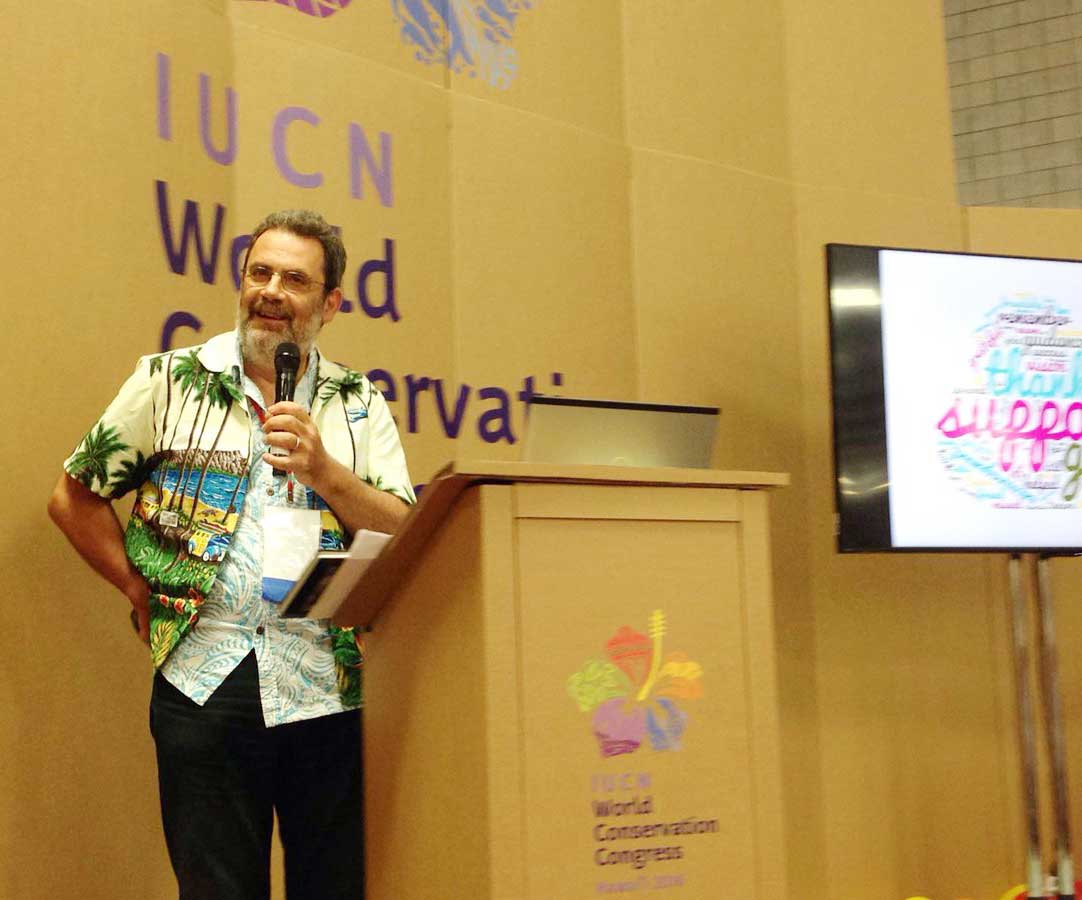
At 2016 IUCN Congress in Hawaii
Several governmental fisheries agencies were extremely displeased. In engaging with the scientists from these agencies, we had to separate political objections from genuine scientific issues being raised by fisheries scientists. By working through all of these issues, and yet refusing to give into political pressure, we were able to make the IUCN Red List what it is today: the most objective, trustworthy and transparent compilation of data on the status of species in the world.
Red List assessments are used in many ways. They can bring attention to certain species so that funding can be raised for their conservation; or they can result in governments stepping in to address the threats, for example by stopping the economic development of habitats of threatened species. The IUCN Red List is also used to provide crucial data to decide where roads should be constructed so as to avoid threatening species, or by banks to help them decide whether or not they should invest in infrastructure projects. The uses to which the IUCN Red List has been put has exceeded all of our expectations and we are thankful that it has societal value and is widely trusted.
Global Amphibian Assessment
In 2001, after working at IUCN headquarters in Switzerland for 16 years, I was given the opportunity to work in the offices of Conservation International in Washington, DC. (*1997 Blue Planet Prize winner) while continuing to be employed by IUCN. The first project I worked on there was the Global Amphibian Assessment. I chose amphibians because I love them, and also because we knew that there was a lot of evidence of unexplained amphibian declines in several parts of the world. We worked with 550 amphibian experts from all across the world and looked at all 5743 amphibian species that were known at the time. We spent three years on this project, and entered the data into the IUCN Red List. We found out that about one-third of amphibian species were globally threatened. The largest cause of amphibian decline is habitat loss.

The next most common reason is disease, specifically a fungal disease called chytridiomycosis. The problem with chytridiomycosis is that we still have no practical cure for it in the wild. The third major threat is overharvesting of amphibians. Humans are responsible for the decline of amphibians. Obviously humans have not intentionally spread chytridiomycosis around the world. However, the disease did not spread on its own. It is believed to be of Asian origin but has now spread throughout the world due to the global movement of pets and goods. The fact that most amphibians live on land and in water makes them more vulnerable because they face threats from both sides. The Global Amphibian Assessment showed that the situation of the global environment was still very much deteriorating with biodiversity threatened by multiple drivers, and that serious conservation efforts must be made to correct it.
About Synchronicity Earth
I retired from IUCN after serving 8 years as Chair of the IUCN Species Survival Commission when my term limit expired in late 2016, and then I started working with Synchronicity Earth at the beginning g of 2017. Synchronicity Earth is a UK charity funded through an investment fund in London, helping to fund species conservation activities. I chose to work with Synchronicity Earth, partly because they are one of the very few organizations which funds amphibian conservation, and also because they support a lot of other work that I consider to be of high priority. I was becoming increasingly doubtful that the future of conservation lies with large western organizations; instead the future lies with local groups conducting grassroots activities in tropical countries. Most conservation organizations spend a lot of time looking for donors, and then submitting a grant applications, often with a low probability of success. Synchronicity Earth does not allow organizations to apply or submit proposals. Instead our research team looks for the organizations dealing with really important issues around our funding programs and sees whether or not they match our values and would really benefit from our support. In particular we support small organizations in tropical countries. Once our board has approved an organization for funding, we ask for their proposal — but this is after we've already decided to fund them. It's a radically different model. Synchronicity Earth only has about 16 staff but it funds a variety of programs, such as work in the Congo Basin in Central Africa, high and deep sea policy, supporting freshwater biodiversity, Southeast Asian threatened species, globally threatened amphibians, and so on. It is a wonderful and exciting organization to work for.
Family
My wife, Ann, is a biology teacher and really enjoys instilling a love of nature into her students. She is more of a biologist than I am, and is much better than me at identifying flowers, bees and moths and many other living things. She often tells me what things are called. My oldest daughter Claire loves animals. She loves working with small children at a nursery in Bath, UK. My younger daughter Jyoti is an archaeologist specializing on human bones. She loves to grow plants from seeds and to watch them grow. My family means a lot to me and they all have their own minds and interests; they probably had much more influence on me than I did on them!

Riding in Wyoming National Park with his family
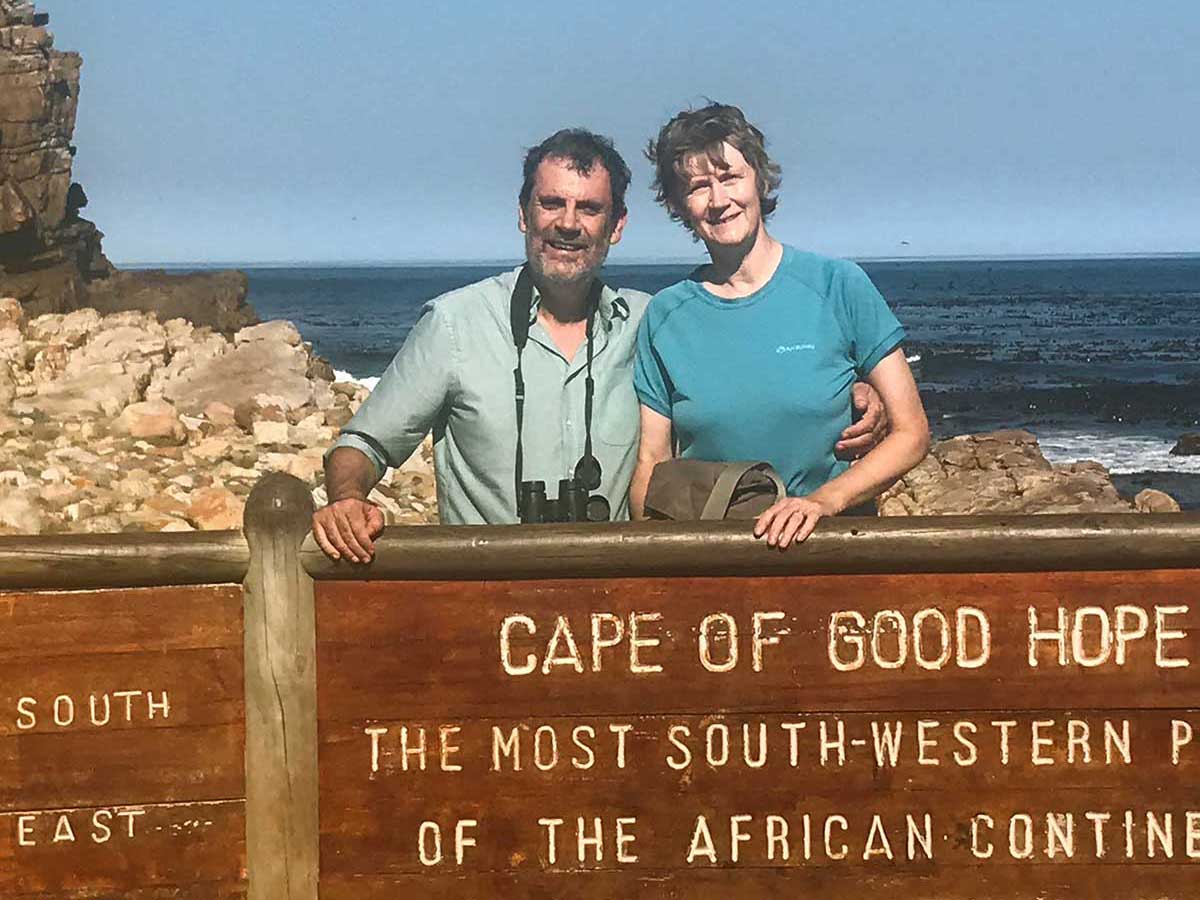
Cape of Good Hope, South Africa
Message to Young People
If we still want to have a world with the diversity of species that are used to, we urgently have to find ways to deal with many global challenges. We have to think about the long term, about what will happen in our grandchildren's generation. First of all, much more action is needed around climate change, and we have to include technology to change our behavior. We have to deal with food problems, which means we are going to have to change our diets and eat more vegetables and less meat. We also have to think about how we use water. And we need to look at how we source our energy and stop using fossil fuels completely. So those are all key things we have to do globally. COVID-19 has shown us that national borders mean little. We all face the same issues and need to improve in order to make a better future for ourselves. So, is it really possible to reframe our world, find the best way to coexist with nature, and build a society which is more generous and kinder than it is now? I believe we can. It’s important that we keep our hope alive.
Note: This document is a summary of the interview of Dr. Stuart for a TV program featuring the 2020 Blue Planet Prize winners and was prepared under the supervision of Dr. Stuart. The Asahi Glass Foundation is responsible for the wording.